History of Christmas decorations in Russia
According to some sources, the tradition of decorating the Christmas tree was started by the German theologian Martin Luther. Allegedly, once he was walking home through the woods late in the evening and was so delighted with the combination of shining stars in the sky and tall pines and fir trees in the winter forest that when he came home, he installed a small fir tree in a tub and decorated it with candles.
On the top he installed a star that symbolized Bethlehem star pointing the way to the place where Jesus was born. Today we’ll tell you how that tradition came to Russia and evolved through time.
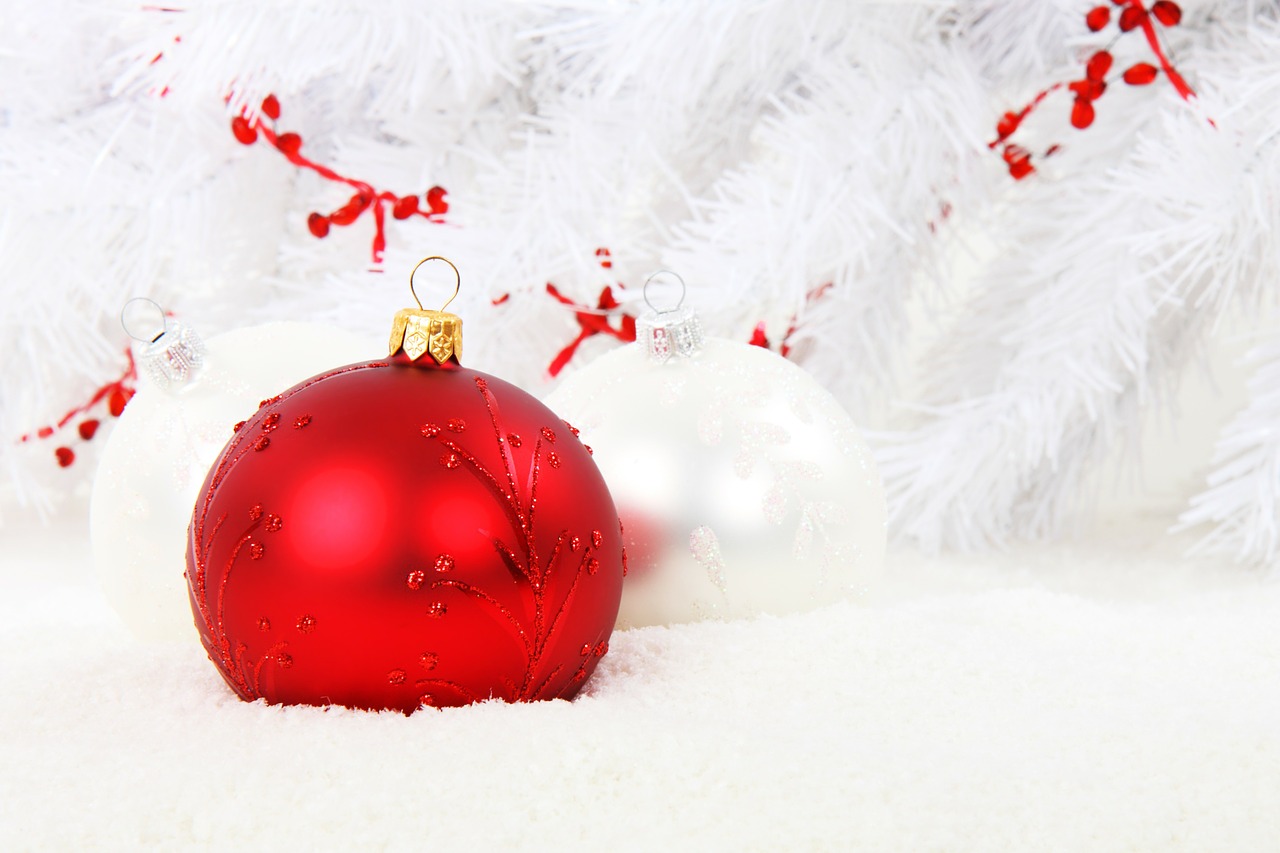
Christmas decorations in pre-revolutionary Russia
In Russia, the custom of decorating the Christmas tree was initially brought by Tsar Peter I (who reigned from 1682 to 1725). Once in his youth, he was visiting his friends in Germany and saw a Christmas tree decorated with apples and sweets. When Peter became tsar, he issued a decree to celebrate the New Year as in Europe, i.e. set decorations of coniferous trees on large streets. However, this tradition did not last very long: after the death of Peter I, his decree was ignored.
The Christmas tree returned as a tradition only under Emperor Nicholas I (who reigned from 1825 to 1855) thanks to his wife, Empress Alexandra Feodorovna, who before the marriage was princess Charlotte of Prussia. She introduced the custom of decorating the house with a Christmas tree with burning candles, as well as the tradition of Christmas presents laid out under the tree or hung directly on the branches. The custom was very much liked by the courtiers and soon spread all over Russia.
In the beginning, Christmas trees were decorated with edible products wrapped in shiny colored foil, as well as toys made from improvised materials: fabrics, cotton wool and papier-mâché. The toys represented figures of people, animals, mushrooms, and cones. Later, the figures were made with clay or porcelain elements.
At the end of the 19th century, the first glass and cardboard Christmas-tree toys, made by the factory, appeared in Russia. Although they were imported from Germany. Russian masters adopted the technology from the Germans and also began to produce glass balls. These balls were quite heavy, the technology of blowing thin glass came only in the beginning of the 20th century.
In addition to glass toys, the “Dresden Cartonage” was also popular in pre-revolutionary Russia – toys made of two halves of convex tinted cardboard. There were also fake fruits made of papier-mâché and velvet and little dolls made of cloth, lace and beads, with a paper face glued to the body. By the 20th century, the faces of the dolls became convex and made of cardboard, and later of porcelain.
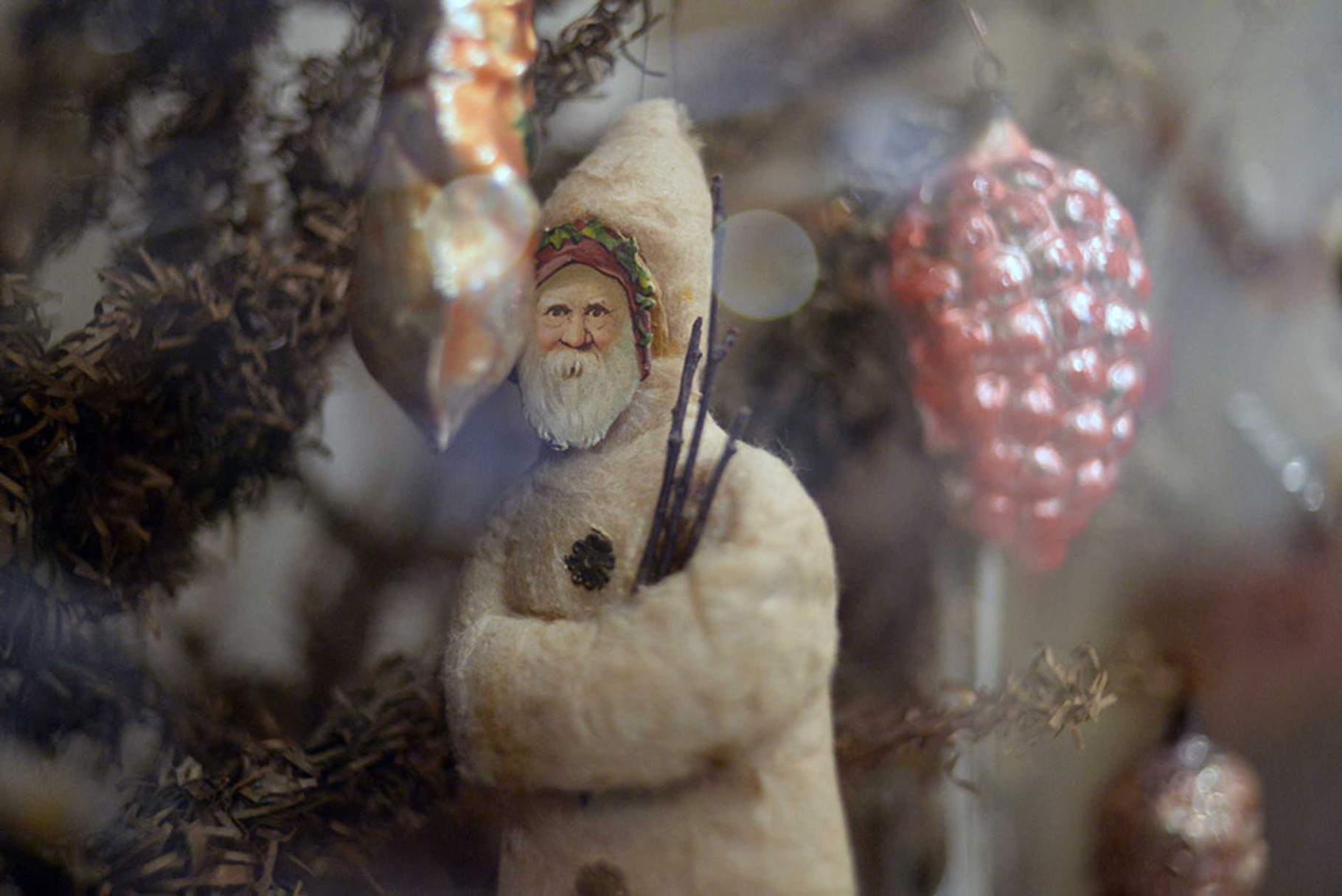
Christmas decorations in USSR
In connection with the abolition of Christmas in 1927 by the Soviet government, the production of Christmas tree decorations in the USSR was interrupted. In 1935, the Christmas tree was reclassified as an ideologically correct communist New Year tree and this way returned to the life of Russians. In 1937, a special series of toys was released: huge red balls with portraits of Stalin, Lenin, Marx and Engels. Following this, toys of an ideological and social nature began to be produced – Kremlin towers, stars, athletes, pioneers, and so on.
Home-made toys and foil-wrapped fruits and candies were replaced by the figures of sportsmen, parachutists, pioneers, airplanes, trains, border guards with dogs, and armored cars made in industrial conditions. The Bethlehem star at the top of the tree was replaced with a red five-pointed star. These stars were produced until the mid-1980s, and many Russians still have these items at home with light bulbs inside which they continue to install on the top of Christmas tree out of habit.

In 1937, a manual was published under the title “Christmas tree in a kindergarten” where it was described in detail how to decorate the Christmas tree “properly” and what to think doing it. For example, the toys that do not require detailed consideration should have been hung on deeper branches, and at the edges of the branches there should have been airplanes, parachutes, locomotives and armored cars.
During the war years, the production of Christmas tree decorations in the USSR did not cease, but they were produced in much smaller quantities. Foil and shoulder straps were used as the source material, from which baskets and sailing vessels were made.
Wire ornaments made of production waste also appeared. These were bird houses, flowers, five-pointed red stars with the hammer and sickle inside. The most popular character for toys were paratroopers. In the New Year post cards, Ded Moroz was destroying the enemy in open battle.
The decoration of the Christmas tree for the New Year during the war was obligatory – this rite reminded Russians of a peaceful life and gave strength to hope for a soon victory.
After the war, the production of Christmas decorations throughout Russia was completely restored in 1946. Peaceful series began to be produced: animals, men and other figures.
From the 1950th, a new technology was launched – toys on clothespins. In the 1960s, a space boom happened, and astronauts, rockets, satellites, and planets appeared on all the Christmas trees of the country. At the same time, a series of girls in national costumes has been launched which should have strengthened the faith of Soviet citizens in the inviolability of the postulate “15 USSR republics – 15 sisters”.
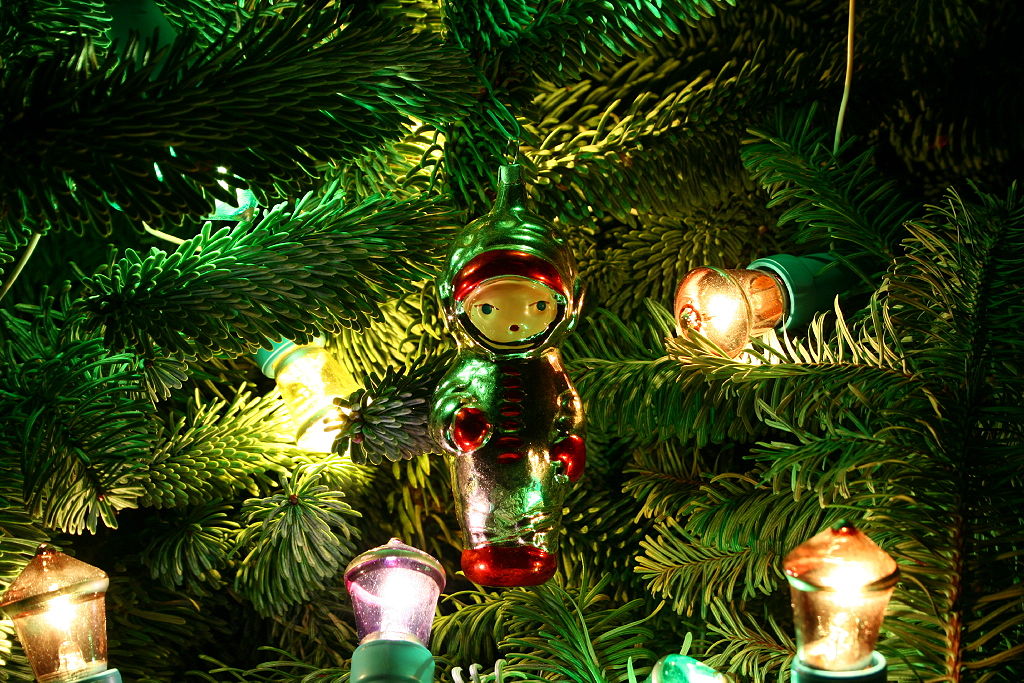
It should be noted that in the Soviet era, the release of toys was directly dependent on the opinions and interests of the general secretary of the Communist Party. For example, under Stalin who respected hockey and loved circus, hockey players and circus characters appeared on all the Christmas trees of the country. One of the most trendy themes in the era of Khrushchev was agriculture. The whole assortment of fruits and vegetables was produced, the most popular toy was corn – “the queen of the fields” – which almost completely disappeared from the trees when Brezhnev came to power.
Since the mid-1960s, the production of Christmas-tree toys has become fully industrial, manual technologies disappeared. Toys from foam plastic and plastic began to appear – they could not be broken so easily. Also in the 1960s, the first electric garlands appeared. Initially, they looked very simple: bulbs painted in different colors: blue, yellow, red. Lights were connected by a wire plugged in the socket. No relays were made at that time, so the lights were always on, without blinking. But, compared to candles, fire risk decreased many times. Later, more advanced electric garlands appeared, which we use to this day.
In the 1970s and 1980s, the “rain” made of aluminium foil became very popular, as well as fluffy, poking tinsel. It became somehow especially pleasant visiting the Soviet shops decorated with all this around the New Year.
The design of toys at that time became less diverse. Factories stamped similar series of balls, cones, pyramids, icicles and bells. These toys still exist in many families. Sometimes you come to visit someone and you see exactly the same toys on the tree as you have at home.
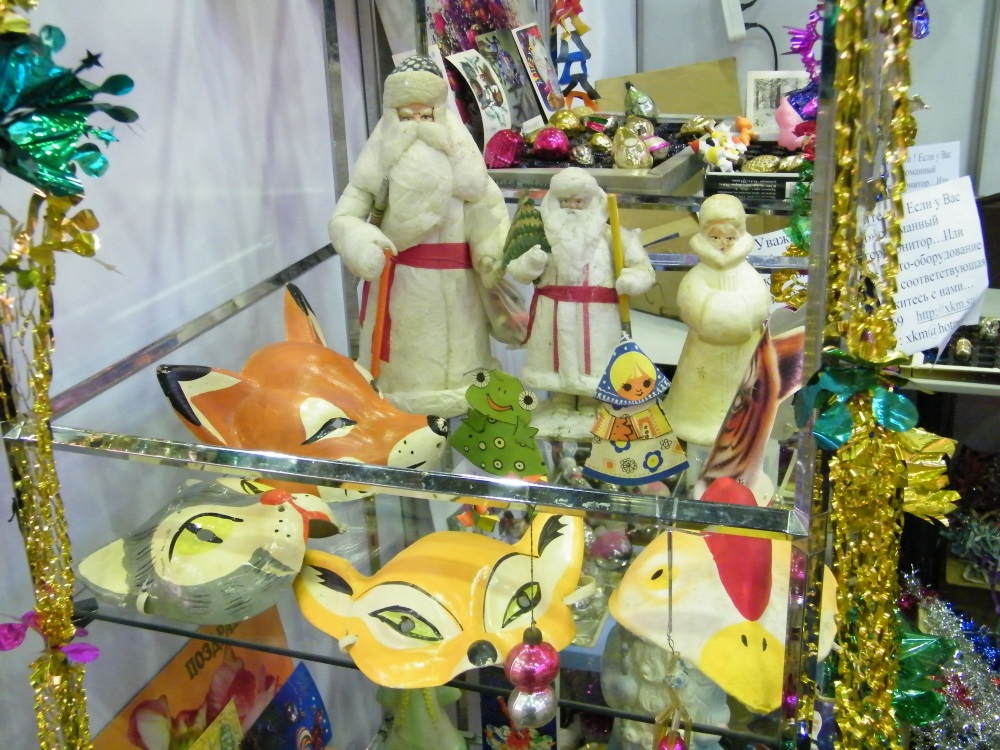
Since the late 1980s, the fashion for all sorts of horoscopes conquered the country, and this of course affected the New Year’s industry. A lot of balls with the image of animals – symbols of the coming year – appeared on sale. This trend is still alive today.
Christmas decorations nowadays
Today, Russian Christmas decorations are more a design work and not an echo of some bright event in the life of the country. In the production of Christmas-tree decorations, there is partly a “return to the roots”. Hand-painted balloons are produced with surprisingly carefully painted landscapes, pictures of Russian winter, as well as state symbols. There are unusually beautiful hand-painted copies that can be safely classified as collection items.
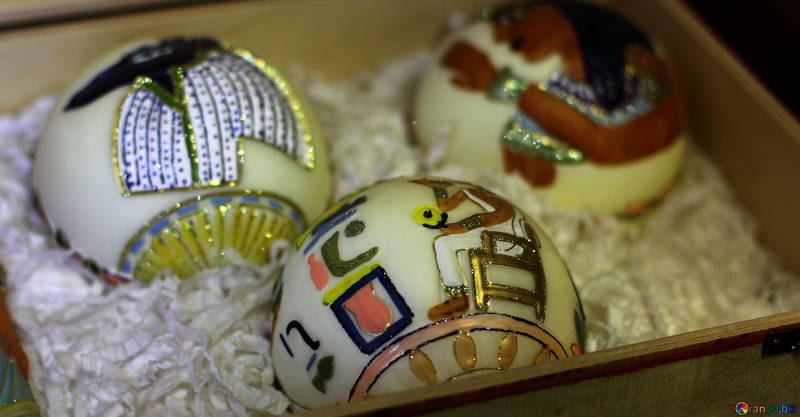
A few years ago, the western tradition to decorate Christmas trees with balls of two colors came to Russia. This trend didn’t fascinate the Russians for too long, soon the Christmas trees returned to the traditional look: as many decorations as possible so that the green needles could not be seen on the tree. Although offices and shops are still more often decorated with Christmas trees “in a Western way”, mostly because of the more “official” appearance of the look.
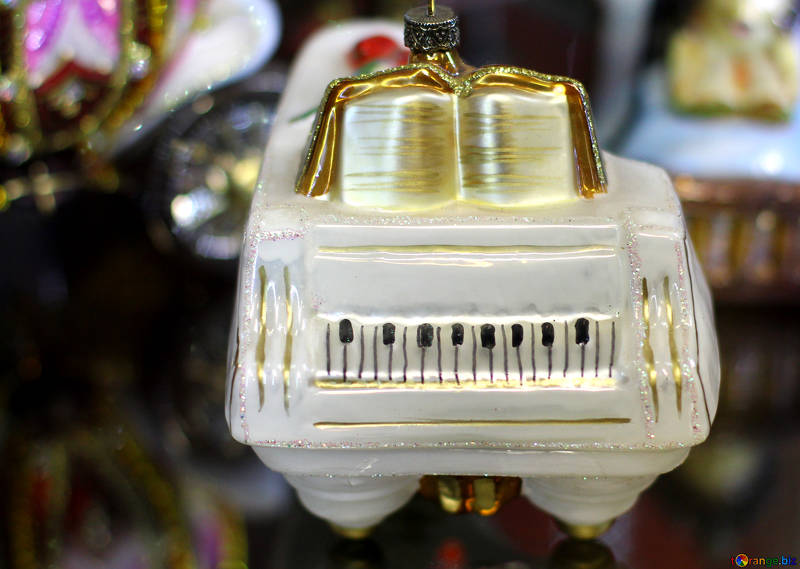
Since the beginning of the 2000s, original, home-made toys have become popular. Figures made of straw, paper, hanks of wool and pieces of cloth; plush animals, felt swans and angels. The fashion for Soviet retro toys made many people climb into the grandma’s storage where old New Year decorations were placed one day as “obsolete”. A Christmas tree, decorated in the style of “vintage”, is considered to be fashionable these days.





